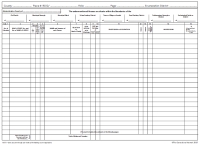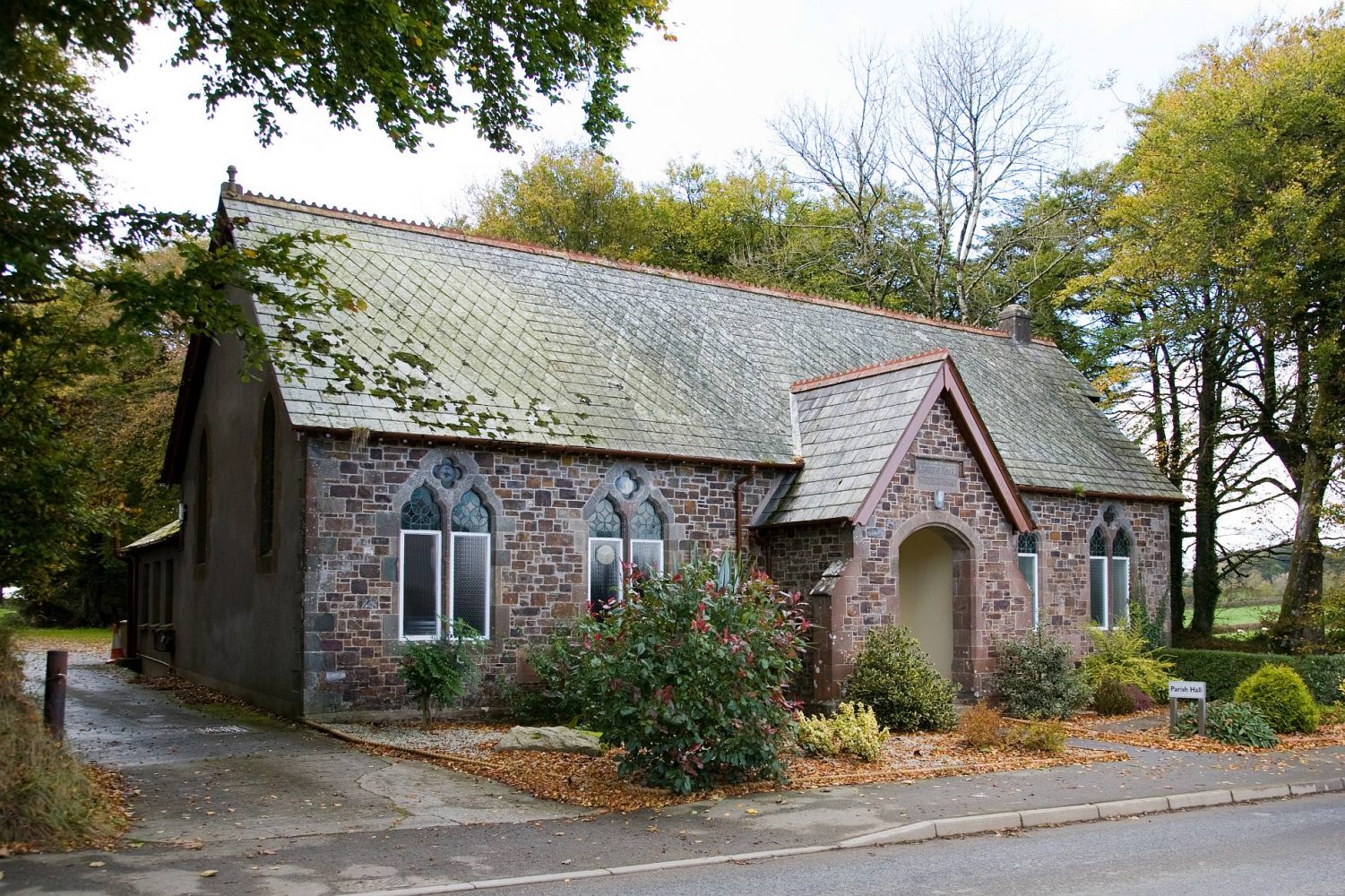Censuses
Courtesy of The National Archives

The information has been transcribed from reproduced images, therefore it is possible that there may be errors.
Summary

The British government took its first national census in 1801. A census has been taken every ten years since that date, except in 1941. The first genealogically useful census, however, was not taken until 1841 when names were recorded. This database holds census summary books for the year 1911 in England and offers additional information about the population due to the governments’ concerns about health issues in the population, frequent emigration from the country, and the rapid rise and decline of several industries, which prompted them to collect additional data. Some information is missing because many women boycotted the 1911 census — refusing to be counted— in response to the government’s denial of the vote to women. The 1911 census was conducted on the night of April 2. Information requested was name of street, avenue road, etc.; house number or name; whether or not the house was inhabited; number of rooms occupied if less than five; name of each person that had spent the night in that household; relationship of person enumerated to the head of the family; each person’s marital status; age at last birthday (sex is indicated by which column the age is recorded in); occupation; whether they are employer or employee or neither; person’s place of birth; whether deaf, dumb, blind, or lunatic. Additional information requested in the 1911 census was the “fertility census,” and occupational questions. Fertility questions included how long the present marriage had lasted, the number of children born alive to the present marriage (including children no longer living in the household), and number of children who had died. Questions about employment were meant to give the government a general idea of which industries were in decline and which were growing, however, many people provided far more information than needed recording the name and sometimes address of their employer in addition to the industry that employed them. This added data can be immensely helpful to genealogical researchers in providing an entire family count, a number of children both living and deceased, names of step children under other marriages, and facts about the culture and living conditions of their ancestor. The protest conducted by the Suffragettes during this census was done in two ways, either the woman (or her husband) did not fill out the census form, writing only her complaint on it, or they stayed away from the house the entire night of the census taking. In both cases details on women of these household will be missing from these records. The exact number who boycotted the census is not known, but it has been estimated at several thousand.
To collect the information, enumeration forms were distributed to all households a few days before census night and the complete forms were collected the next day. All responses were to reflect the individual’s status as of April 2 for all individuals who had spent the night in the house. People who were traveling or living abroad were enumerated at the location where they spent the night on census night. All of the details from the individual forms were later sorted and copied into enumerators’ books, which are the records we can view images of today.
Census returns were collected according to registration district. These returns were divided into sub-districts and assigned consecutive piece numbers for reference purposes. The piece numbers begin in London with number one and work roughly south to north, followed by the Welsh districts and then the Isle of Man and Channel Islands. You will find the piece number on a paper strip at the bottom of every image, following the PRO class number. There are may be hundreds of pieces within a county.
In addition to the piece number, each page of the returns includes a folio number and/or a page number. The folio number was stamped onto every other page before microfilming and is located in the upper right hand corner of the image. Folio numbering usually starts over at the beginning of each piece. The page number is part of the printed form and is found on every page in the upper right hand corner. The page numbers start over at the beginning of every enumeration district. A full reference number for a record in the 1911 census includes the PRO class number (RG78), the piece number, the folio number, and the page number. Keep in mind that you may have to look at several enumeration districts to find the page you want within a given folio since the page numbers start over with every ED.
The clerks who compiled and reviewed the census data made a variety of marks on the returns. Unfortunately, many of these tally marks were written over personal information and some fields, such as ages, can be difficult to read as a result. More useful marks include a single slash between households within a building and a double slash separating households in separate buildings.
Enumeration District 1
Enumerator – Margaretta Coles
All that part of the Parish of Whitstone which lies to the East of the Parish road leading from Bevils Hill to Dolsdon including part Bevils Hill, Langaton, Langaton Mill, Thorns, East Balsdon, West Balsdon, Balsdon Moor, West Moor, North Moor, part Boot and Shoe, Street, Dilland, Pentecost, Elton Cottages.
Enumeration District 2
Enumerator – Walter Noye
District 2 is all the remaining part of the Parish of Whitstone, which lies to the West of the Parish road leading from Bevils Hill to Dolsdon including part Bevils Hill, Burrow, part Tankins, Bennetts, Oak, Whitstone Head, Whitstone Barton, Parsonage, part Boot and shoe, Bradford, Nethercotts, Foxhole, Higher Wadfast, Lower Wadfast, Trowsah, Luckhams, Forkstone, Hanovers Hill, Downrows, Downrow Cottage, Heywood, Dipper, Hill Cottages, Head quarters, Milton, Pendragon, Hockings Park, Shop and Pentecost.
Summary

The 1901 Census of England, Wales, Scotland, Channel Islands and Isle of Man was taken on the night of 31 March/1 April. The completed collection contains detailed information on each individual who spent the night in individual households including name, relationship to the head of the family, marital status, age at last birthday, gender, occupation, and birthplace. Additional information about the dwelling and property was also collected. The Census forms were distributed to all households a couple of days before census night and the completed forms were collected the following day. All forms were meant to accurately reflect each individual’s status as of 31 March/1 April 1901 & the household they spent the night in. People who were travelling or living abroad were recorded at the location where they spent the night. All of the details from the individual forms were later sorted and copied into The Census books, which are the original records you can view images of today.
Enumeration District 1
Enumerator – Ephraim Noye
All that part of the Parish of Whitstone which lies to the East of the Parish road leadingfrom Bevill’s Hill to Dolsdon including part of Bevill’s Hill, Langaton, Langaton Mill, Thornes, East Balsdon, West Balsdon, Baldson Moor, West Moor, North Moor, part Boot and Shoe, Street, Dilland, Pentecost, Elton Cottages, Paradise Cottage, (part Tankins, Sketchley, Colmborough Cottages)
Enumeration District 2
Enumerator – Thomas Hutchings
All that part of the Parish of Whitstone, which lies to the West of the Parish road leading from Bevils Hill to Dolsdon including Bevils Hill (part of) Burrow, Part Tankins, Bennetts, Oak, Whitstone Head, Whitstone Barton, Parsonage, part Boot and Shoe, Bradford, Nethercotts, Foxhole, Higher Wadfast, Lower Wadfast, Trowsah, Luckhams, Forkstone, Hanovers Hill, Downrows, Downrow Cottage, Heywood, Dipper, Hill Cottages, Head Quarters, Milton, Gratten Cottages.
Summary

The 1891 Census for England was taken on the night of 5 April 1891 when the population of Whitstone was 394 persons. Registration District of Stratton. Registration Sub District of Week St Mary. Parliamentary Division of Launceston.
Enumeration District 1
Enumerator – Nathaniel Coles
All that part of the Parish of Whitstone which lies to the East of the Parish road leading from Bevils Hill to Dolsdon including part Bevils Hill, Langaton, Langaton Mill, Thorns, East Balsdon, West Balsdon, Balsdon Moor, West Moor, North Moor, part Boot and Shoe, Street, Dilland, Pentecost, Elton Cottages.
Enumeration District 2
Enumerator – Ephraim Noye
District 2 is all the remaining part of the Parish of Whitstone, which lies to the West of the Parish road leading from Bevils Hill to Dolsdon including part Bevils Hill, Burrow, part Tankins, Bennetts, Oak, Whitstone Head, Whitstone Barton, Parsonage, part Boot and shoe, Bradford, Nethercotts, Foxhole, Higher Wadfast, Lower Wadfast, Trowsah, Luckhams, Forkstone, Hanovers Hill, Downrows, Downrow Cottage, Heywood, Dipper, Hill Cottages, Head quarters, Milton, Pendragon, Hockings Park, Shop and Pentecost.
